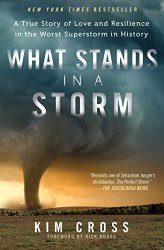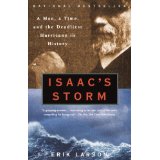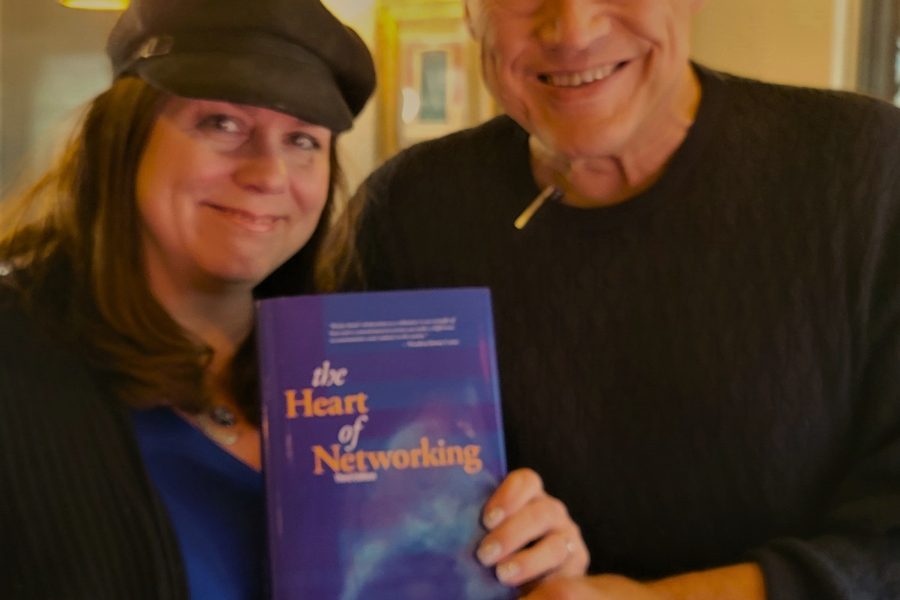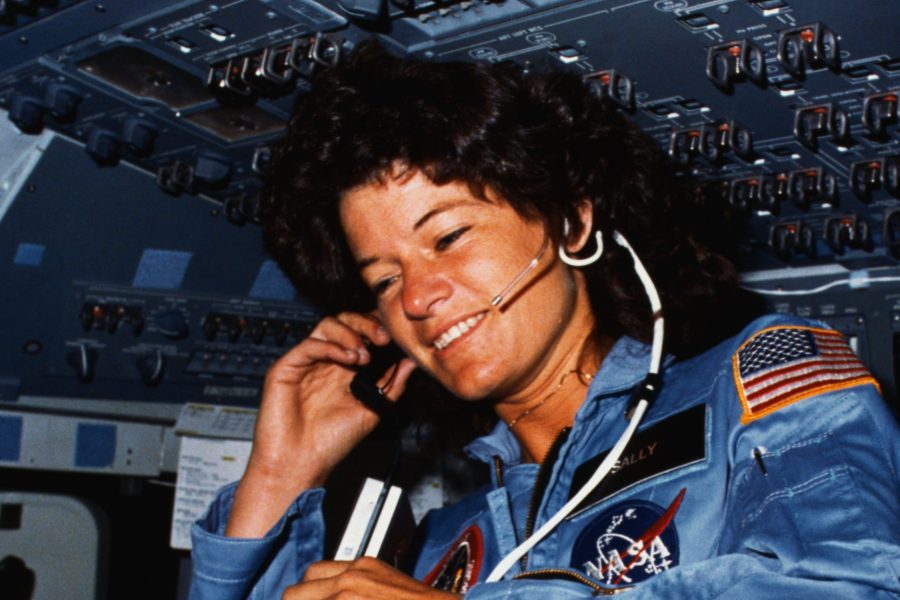
The day I spoke with Alabama author Kim Cross, it was on the one-year anniversary of her first book being published. The Alabama native and contributing editor with Southern Living Magazine wrote What Stands in a Storm, her riveting New York Times’ bestseller published by Atria/Simon & Schuster.
The book captures the true story of love and resilience in the worst superstorm in history – a three-day storm in late April 2011 that unleashed 349 tornadoes in 21 states, destroying entire towns. Alabama was ground zero for the disaster, where on April 27 alone a total of 62 tornadoes raked the state. The storm also claimed 324 lives, most of them in Alabama, which now leads the nation in tornado deaths.

Kim and I spoke by phone as she was driving to Roswell, Georgia, to be honored as the featured author for the eleventh annual Roswell Reads Community Read program. Having finished her book in two days, I can attest to its power. The story was impossible to put down – it pulsates with tension as I experienced the love of friends and neighbors, parents and children, in the tension-filled moments leading up to the storm and its aftermath.
Ron Powers, Pulitzer-Prize-winning journalist and coauthor of Flags of Our Fathers said it best: “…the terse dark poetry of this debut book explodes from every page.”
As a Dayton, Ohio, native who remembers as a child hearing the tornado sirens from neighboring Xenia, Ohio, in 1974, I was keen to talk to Kim. I also have been working on my own disaster story – the retelling of a historic flood that destroyed Dayton 100 years ago, I found reading her book and learning her writing process incredibly helpful and inspiring as I edit my own work.
What Stands in a Storm is Kim’s first book, but it doesn’t read like it. Her narrative was born from a magazine story she wrote with Alabama native son Rick Bragg for Southern Living. Rick, a Pulitzer Prize-winning journalist and author, was living in Tuscaloosa at the time. He and his family made it through the storm, but their street was hit “really bad.” Kim asked him to write something from the heart of what it meant to be in this storm and he agreed. His intro paired with her reporting along with fellow staffer Erin Shaw struck a chord in people. According to Kim, “We got hundreds of messages from readers, who said, ‘That it was the first time I ever cried while reading Southern Living.’ I realized it was touching this emotional place inside of people… I felt like that story needed to be told.”

 “I started to look around and I realized that we have epic bestselling books about hurricanes and floods and Nor’easters (The Perfect Storm), but we didn’t find a book like that about tornadoes that really did it well. I wanted something like Isaac’s Storm and The Perfect Storm. I don’t know if I was aiming too high but that’s what I was hoping to do,” she said.
“I started to look around and I realized that we have epic bestselling books about hurricanes and floods and Nor’easters (The Perfect Storm), but we didn’t find a book like that about tornadoes that really did it well. I wanted something like Isaac’s Storm and The Perfect Storm. I don’t know if I was aiming too high but that’s what I was hoping to do,” she said.
I think Kim met that standard of excellence and exceeded it with her phenomenal storytelling. Below is our expanded conversation.
Q. Where were you on April 27, 2011?
Kim: My husband and I were sitting on our couch [in a suburb of Birmingham] with our son who was 4 at the time, watching weatherman James Spann as the tornado went through Tuscaloosa.
It was awful. We knew the town so well. I had gone to college twice in Tuscaloosa and we had lived there. There is this moment where you watching it and it feels like a movie. It reminded me when we were all watching TV and the Twin Towers fell. I remember feeling, ‘Is this real?’ Then you have this moment when you realize, ‘I’m watching people die right now’ and it’s a horrible feeling.
Then the Tuscaloosa EF4 started making its way toward Birmingham and it actually got a little bit bigger as it came. From what we could tell we were right in its path. At some point the power went off and we lost TV. I watched live Twitter feeds from my phone, watching Jim, who knows the neighborhoods so well. At one point he called our neighborhood and that’s where it got really scary. My husband is an Eagle Scout – he’s Mr. Prepared. He was the one who had us put on bike helmets before it was widely done. Studies show that a helmet would have saved a lot of lives because of flying debris.
Waiting out a tornado is one of the few times in life where you have time to think about impending death. Usually you get a lot of time to think about it because you’re sick or there’s no time to think because it happens so fast. When the tornado passed – we didn’t see much of anything in our neighborhood but seven miles away a neighborhood of Birmingham was just flattened. It came within two or three miles of downtown Birmingham.”’
Q. I always thought that tornadoes mostly struck the central of the country – Kansas.
Kim: People think of Oklahoma and Kansas having a larger volume of tornadoes, but Alabama and the South – the so-called Dixie Alley — has more of the big ones, more of the EF4s and EF5s, so the numbers are a little deceptive. The other thing is Oklahoma and Kansas are flat, there aren’t a lot of trees and it’s not real humid so you can see the tornadoes and get out of the way. The chasers go there and that’s where they get filmed. Tornado chasers don’t generally chase in the South because we have a lot of hills and a lot of trees, and the roads are windy — they don’t go in a grid. It’s really hard to see the tornado across the landscape.
Q. I was impressed with the degree of research you had in your book. How important was research in writing What Stands in a Storm?
Kim: It was everything. I probably spent 80% of my time on research and 20% of time in an outright panic trying to get words on a page. There was so much research that went into it because it wasn’t this straightforward narrative in the sense that the central characters are all victims… There are so many stories that deserved to be told but you can only tell a few without confusing and losing the reader.
I started by getting the weather reports and the tornado tracks and see what towns were hit and then I went to all the newspapers in those towns to look up who was lost and who they were and who was left behind. I felt pretty strong from the beginning that Tuscaloosa was going to be one of my focused towns — one it’s the one people remember. People outside Alabama know Tuscaloosa because of Crimson Tide. It was well documented and also because it was one of my hometowns – I knew it very well. But I also wanted to tell the story of a small town and a volunteer fire department — a community that didn’t have the well-funded, well-equipped fire department / rescue squads that a town like Tuscaloosa would have. That represents most of the towns in Alabama and most of the towns in the country. They are saving people just the same as people who are paid a full-time salary.
Q. You did an amazing job introducing readers to some of the Alabamans whose lives were forever changed by the storm. What story resonated most with you on a personal level?
Kim: The story of the three college students — Danielle, Will and Loryn. I could relate to all of them in a different way. They were all working so hard to get through school and they were from a small town and close to their families. I felt a great emotional investment in each of them. When I look at my son I think of Will – Will was a brunette little boy who loves his mom. I think about Danielle and how much she just busted her ass to put herself through college, to work, and to fight for her grades. I liked her feistiness and her pragmatism. She wasn’t going to let anyone bully her sister. I like Loryn’s spirit and the fact that she was just wide open – she had a great head on her shoulders and was the kind of girl who was comfortable in a dress or cowboy boots.
I wanted you as a reader to not know who lives or dies until it happened for the reason that if you know who is going to die, you keep them at arm’s length and you don’t allow yourself to care about them too much. I wanted you to paint your own faces on these characters. That’s why there are no photos in the book so that when you did lose them, you really felt like you lost someone you cared about. My editor was the one who insisted on no photos.
Q. Your description of the destruction from the storm was almost its own character. How were you able to do that so vividly?
Kim: I got my hands on every video I could –so I could feel like I was there. There were some riveting videos. If you go on my website there is a little playlist I created. I read fictional accounts – including Salvage the Bones by Jesmyn Ward. She did a wonderful job of describing a hurricane. I studied the heck out of her verbs. I tried to figure out “how did she do that? What did she do there?” I read and re-read The Perfect Storm and Isaac’s Storm.
Q. How did you get your book published by a major imprint?
Kim: I had an agent, Jim Hornfischer, who I met at a literary non-fiction conference in Dallas. I always wanted to write a book and had gone to grad school and wrote a book about two nuns. It just wasn’t the right first book [I didn’t want to be pigeon holed as a religion writer]. I met Jim and I just knew he was the one — a straight shooter. We started batting ideas around for a book. I said, what about this [a story about the storm]? A lot of magazine stories evolve into books. I feel like the emotional response from readers in Southern Living shows how much people needed this story. When something horrible happens (like a tornado), you’re in just one little spot. I thought it might be helpful and healing for people to understand the magnitude of what happened but also the beautiful things that came from the brokenness. I think it turned out to be the perfect first book. I love science – taking something really complicated and esoteric and trying to make it come alive and be understandable for a lay reader.
Q. If you were going to advise someone who is writing that first book, what pearly of wisdom would you share that you learned from this experience?
Kim: To study structure in other books. Structure is the hardest thing. I didn’t understand structure when I wrote my earlier [unpublished] book – I’m going to have to go back and rewrite it. I also didn’t understand how book publishing worked. If you are a fiction writer, you write the book and then you find an agent who likes it and the agent helps you revise it and get it into shape and he or she sends the entire manuscript to publishers.
With non-fiction, you don’t write the book – you write a proposal, which is a 60 to 70-page document that lays out a blueprint of your book, including why this book is different. It has a 35- or 40-page chapter outline and you have to explain who your audience is and what your marketing plan is because it’s not enough to write a good book, you have to sell it. Publishers want to know if you have a platform and social media followers. The harder you work on the front end to get the proposal great, the easier it will be on the tail end to both write the book and sell it. You have to chip at it every day. It’s a marathon, not a sprint.
Also, you never feel done and you can never fact check it enough. I didn’t realize …magazines come with a staff of fact checkers who go behind you and they call your sources and make sure everything you’ve written about them is correct. Book publishers don’t have that, so if something is wrong, it’s all on you. I actually sold a beloved a mountain bike so I could pay for a National Geographic-trained fact checker. I ‘m glad I did it.
Q. How many places did your agent send out your manuscript?
Kim: I think my agent sent it out to 10 to 12 big New York imprints of publishing houses. I had two bid on it, including an imprint of Simon & Schuster. The rejections were so nice – they said we love the writing; we love the idea. The flaw they saw is that they didn’t see the characters [because I hadn’t fleshed them out yet], or they said that the story was going to too many places.
Q. How has the book done?
Kim: So far no one has come forward to come forward with a correction. Regionally it’s done well but I can’t get it on the national radar. The other thing I’ll say – this whole NY Bestseller List is a lot of smoke and mirrors. It did well enough in the first two months that it got on one of these narrow sublists of The New York Times – adventures, disasters and expeditions. The Perfect Storm and Isaac’s Storm are still on that list so I imagine it is not that big of a category. But, when that happens you get to put it on the paperback.
Q. How important is social media if you want to reach readers for your book?
Kim: I feel it’s an evil I have to deal with. Honestly it’s one of the hardest things we as authors have to deal with because most authors are introverts and in order to promote a book, you have to put your extrovert hat on. For social media – so much of it feel not very authentic… I’m torn about it. I feel like you can’t afford to not be on them unless you are Rick Bragg who has never been on them and people don’t expect you to be on them. I enjoy Instagram – I think that’s my favorite of the social channels.
One positive [aspect of Twitter] is you get to dialogue with readers. It’s an interesting reporting tool. You want to hear how people are interacting with your work. I put out something on all the social channels – where I’m looking for people who had a certain kind of Schwinn bike when they were a kid. People are posting pictures of their bike. The other way I use it is to put out some of my process of writing. When I went on a writers’ residency where I had to churn out 1,000 to 2,000 words a day, I shared that with my followers. Some days it came easy other days it didn’t. I think people need to see that writing is a lot of work. This is what the process looks like – it’s messy; it’s hard.
Author Bio
 Kim Cross is a contributing editor for Southern Living and a feature writer who has received awards from the Society of Professional Journalists, the Society of American Travel Writers, and the Media Industry Newsletter. Her writing has appeared in Outside, Cooking Light, Bicycling, Bike, Runner’s World, Parade magazine, Popular Mechanics, The Tampa Bay Times, The Birmingham News, The Anniston Star, USA TODAY, The New Orleans Times-Picayune, and CNN.com. She lives in Alabama. Connect with her at kimhcross.com
Kim Cross is a contributing editor for Southern Living and a feature writer who has received awards from the Society of Professional Journalists, the Society of American Travel Writers, and the Media Industry Newsletter. Her writing has appeared in Outside, Cooking Light, Bicycling, Bike, Runner’s World, Parade magazine, Popular Mechanics, The Tampa Bay Times, The Birmingham News, The Anniston Star, USA TODAY, The New Orleans Times-Picayune, and CNN.com. She lives in Alabama. Connect with her at kimhcross.com





